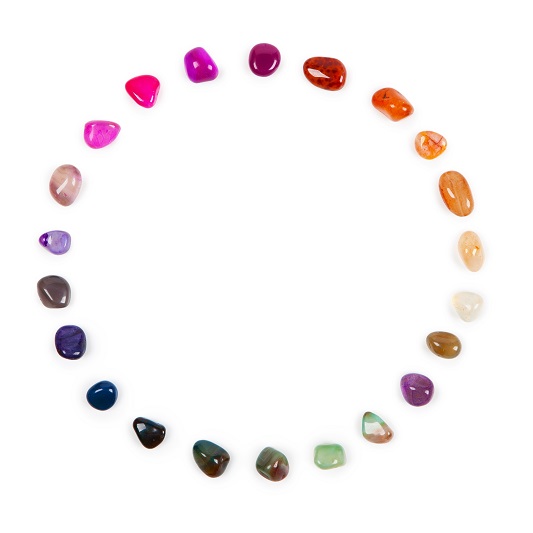Gaspeite, Gemstone of the Week

Spodumene, gemstone of the week
1st June 2018
Gemstone of the Week – Ethiopian Opal
12th June 2018A variety of Nickel Carbonate, Gaspeite belongs to the Calcite family of minerals. First discovered in 1977 by renowned mineralogists, D.W Kohls and J.L Rodda, the stone is one of the newer gemstones on the market. Gaspeite is always green in colour, though the exact shade may vary. Typically, specimens range from pale-green to vibrant-green and have brown veins running through them. The name of the gem-stone is thought to derive from the location where it was first found – the Gaspé Peninsula of Quebec. When the mineral was first discovered, it was thought to be merely a byproduct of Nickel Sulphide min-ing; however, it didn’t take long for mineralogists to realise the true value of their discovery. Today, the gemstone is popular amongst mineral collectors due to its rarity and unique appearance. In this article, we explore Gaspeite in more detail.
How to Identify Gaspeite
To the untrained eye, Gaspeite can be hard to identify. However, those with the correct equipment can easily distinguish it from similar minerals. To start with, Gaspeite can be identified by its composition. The stone belongs to the Calcite group of minerals, which have a range of unique qualities. Gaspeite is a fairly dense stone, with a gravity similar to that of Garnet. The hardness of Gaspeite ranges between 4 and 5 on the Mohs scale, which makes it similar to Apatite. Though the stone has similar properties to other minerals from the Calcite group, it can be distinguished from these by its bright green colouring and brown inclusions. Finally, the stone can be identified by its cleavage. Perfect in 3 directions, the cleavage of Gaspeite is unlike other minerals.
Different Colours and Types of Gaspeite
Gaspeite is renowned for its vibrant green colouring, but the shade of green can vary between speci-mens. Some stones may appear pale green in colour, while others are apple-green to yellow-green. Addi-tionally, most specimens exhibit brown veiny inclusions.
In its natural state, Gaspeite is opaque; however, Gaspeite crystals are typically translucent. When cut and polished, the mineral becomes shiny with a strong lustre. Typically, the stone is cut en cabochon. This type of cut best displays the vibrant colour of the gemstone. Sometimes, Gaspeite is facetted, instead, particularly when the stone is used as a collector’s item. The most popular cuts are ovals, rounds, and cushions. Gaspeite can also be carved into ornamental designs or large slices for display purposes.
As mentioned previously, Gaspeite is a member of the Calcite group of minerals. Typically, stones from this group are not gem-quality, as they rarely form with a transparent appearance. Though Gaspeite is opaque in its natural state, the stone becomes translucent when cut and polished. This allows the mineral to hold a higher value than other varieties of Calcite.
Where is Gaspeite Found?
Today, Gaspeite can be found in various locations worldwide. Most gem-quality stones are found in the USA and Australia, though smaller deposits of the mineral can be found elsewhere. Other notable loca-tions include Tasmania and New South Wales in Australia, Sardinia in Italy, Lavrion in Greece, and the Eu-genia Mine in Spain.
Healing Properties of Gaspeite
Like most precious gemstones, Gaspeite boasts a variety of healing properties. Physically, the stone is thought to combat lung problems and bronchitis, especially amongst the older generation. The gem also boosts the metabolism, making it ideal for those looking to lose weight. Gaspeite is thought to combat a variety of digestive issues including constipation, diarrhoea, flatulence, and indigestion. With this in mind, those who suffer from IBS could benefit from wearing a piece of Gaspeite. As the stone is thought to control blood sugar, it is also great for those suffering from diabetes and associated issues. Before each meal, sufferers are encouraged to hold a piece of Gaspeite. Alternatively, a piece of Gaspeite jewellery can be worn around the neck. As the stone combats indigestion, it can also benefit those experiencing acid reflux or GERD.
As well as being a physical healer, Gaspeite boasts a range of emotional healing properties. For instance, the stone possesses an uplifting energy. When worn around the neck, it can help the beholder overcome emotional pain and become happy once more. With this in mind, the stone is beneficial for those suffer-ing from grief, heartbreak, and anger. Gaspeite is also thought to boost self-confidence and encourage social ease. This property helps the beholder to become more open with others and discuss feelings that would otherwise be suppressed. The stone can also assist the wearer to speak the truth and develop and open-minded view of the world around them. Gaspeite also helps the beholder to see clearly. This can be helpful for those looking for true love, as they can see potential partners for what they really are. Finally, the stone is believed to bring people together and promote kindness and empathy. With this in mind, wearing a piece of Gaspeite could improve relationships with family, friends, and colleagues.
In Summary
High-Quality Gaspeite is loved worldwide. Today, the stone is found in various locations around the world, with notable sources including the USA, Australia, Spain, and Greece. Loved for its vibrant green appearance, fine-quality Gaspeite is often used in designer jewellery. Whether you’re hoping to use the stone for its benefits within crystal healing or you’re looking for a beautiful new addition to your jewellery collection, purchase a piece of Gaspeite to reap the benefits.




